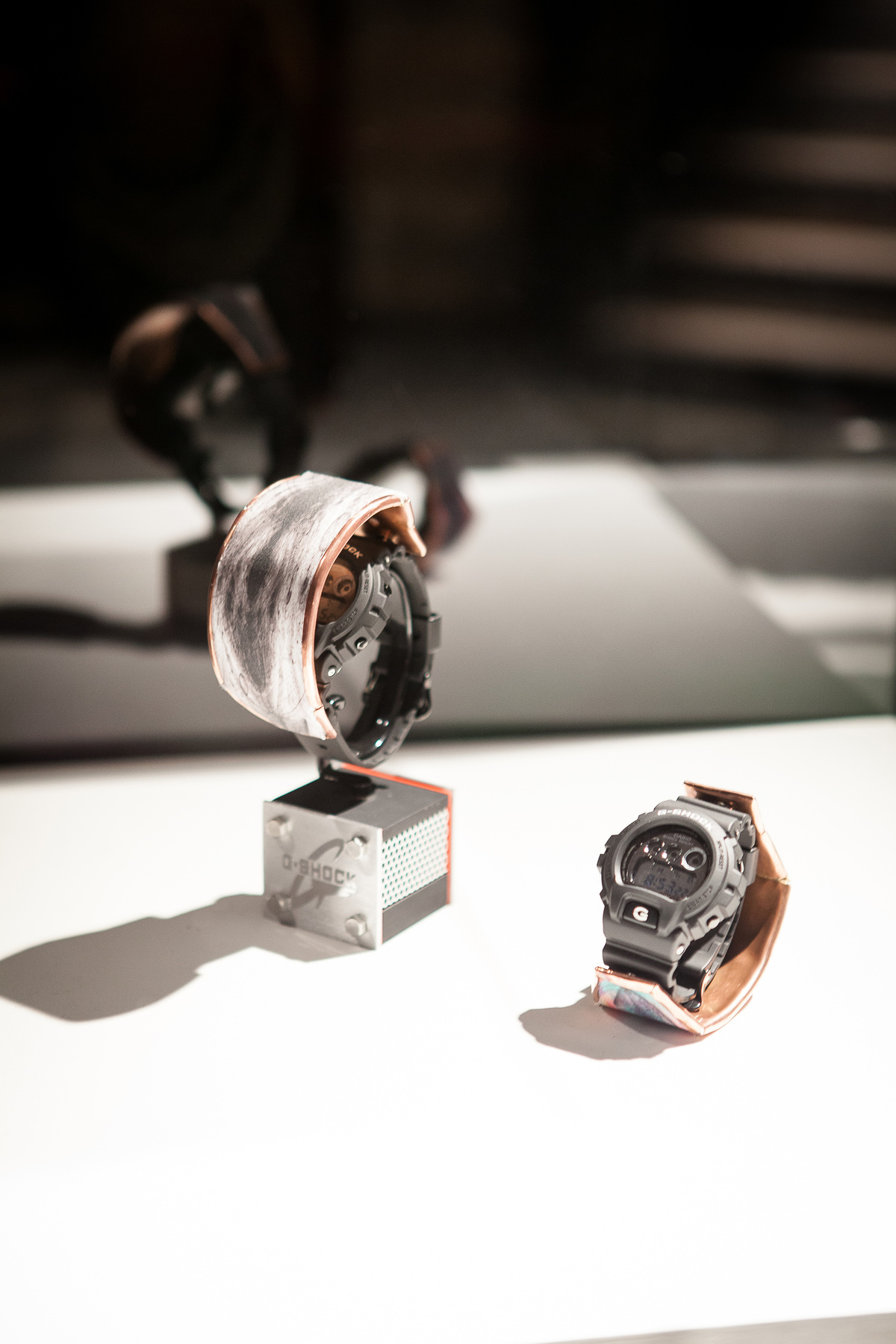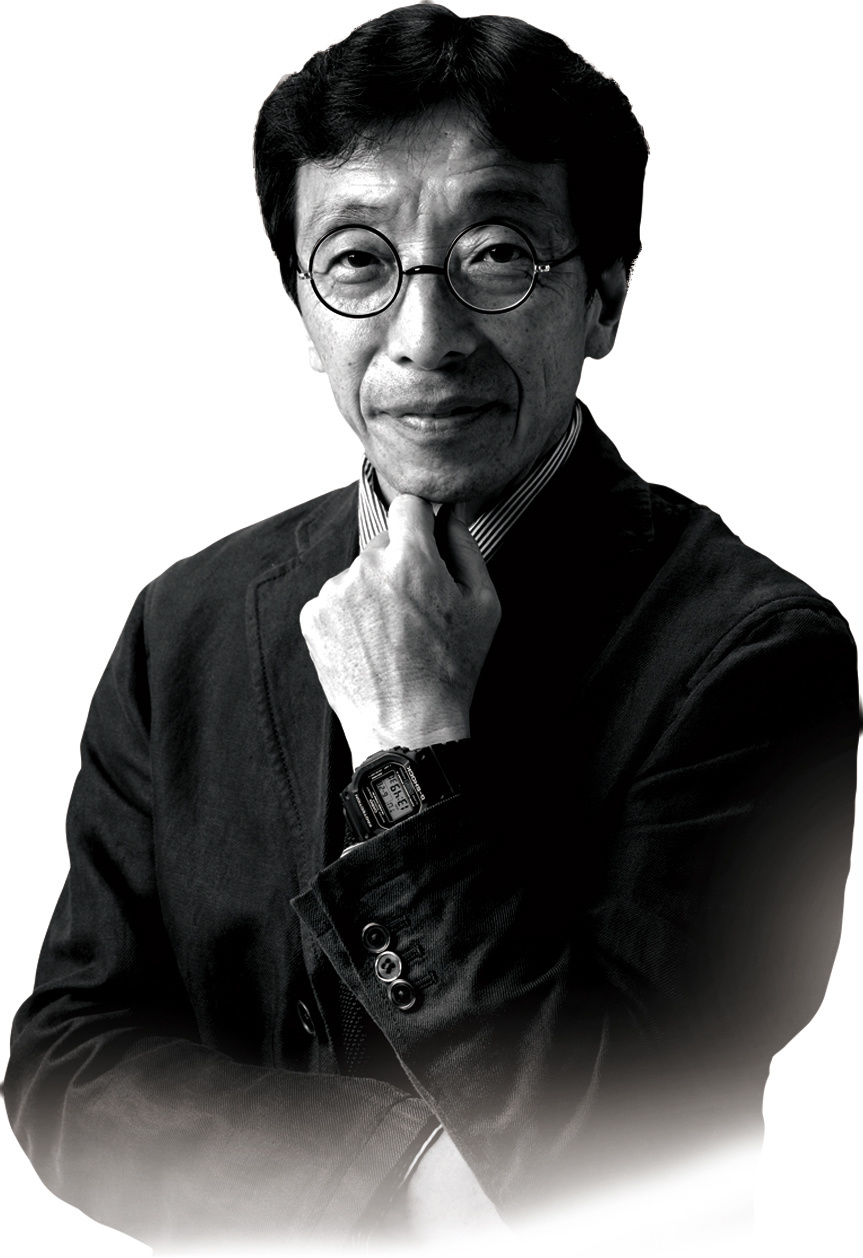Concluding their 30th anniversary celebrations, over one thousand guests gathered in the pulsing heart of Berlin’s Kraftwerk to toast G-SHOCK and watch the final act of its G-SESSIONS contest. From Milan to St. Petersburg, London to Amsterdam, leading lights from creative scenes throughout Europe were tasked with curating, promoting and encouraging local talent to evoke the Japanese brand’s spirit of toughness into one exceptional piece of art.
“G-SHOCK have collaborated with so many talents over the years but we wanted something truly beautiful, something that went beyond strap or face design play,” cooed team OntFront, Amsterdam entry in unison. Their sentiments were echoed by Berlin’s Patrick Mohr who declared, “it wasn’t enough to just design a face, it had to be a beautiful fashion piece.”
Following months of design daydreaming, prototype pushing and local launches, the final night of close run competition saw the lead swap and change countless times but ultimately, skateboarding and streetwear photographer Nikita Yarutskiy walked away with the prize thanks to a design that showcased his dark doodles. “It was very important to integrate my influences from skateboard culture into my idea, especially the difficulty of overcoming your own fear is essential to me,” Nikita quietly confessed before the celebrations enveloped him. It wasn’t just Nikita’s night. The brightest spotlight shone on G-SHOCK itself. Before the night descended into , we sat down with Kikhuo Ibe, its engineer and founding father, for some tough talking.

What was the catalyst for G-SHOCK?
Watches were too fragile. My father gave me a beautiful watch as a present but I dropped it and it broke. G-SHOCK was born out of the desire for added protection, we wanted to make the watches unbreakable. The concept was one of innovation.
How has the G-SHOCK wearer changed over the last thirty years?
We used to support only blue collar workers, those who had physically demanding jobs and needed a strong watch but it has merged with the street, the fashion world has taken an interest in G-Shock.
30 years strong, has the durability of the brand itself surprised you?
Our focus has always been on ensuring our products were non breakable and encapsulated toughness but we’ve been keen to explore the more design and fashion led interpretation. Toughness translated by design is the future.

How do you continue to innovate?
We try to create by function first. Innovation and technology are not pursued for the sake of newness but for need. We solve problems. For example rally mechanics working in a desert race complain about their watches jamming because of the small grains of sand, we modify and improve to ensure our watches work in any stiuation. Practical first, innovation second.
We recently saw the release of the first G-SHOCK with bluetooth connectivity and the launch of the iWatch is imminent. Are smart watches the future?
We have just begun to open the door on what we can do with technology, there are so many applications. However, we are a wristwatch company so we will always offer a watch first as opposed to a wearable device that is gadget first. For us, the future is linking the watch with added functionality so that it solves new problems.

Tonight’s exhibition showcases the brand’s vast archive, tell us about your favourite watch or innovation.
The DW6000 became very popular in the US and this was followed by a big boom in Japan. The Japanese audience knew G-Shock but it became even more of a key company because it became international.
And your favourite collaboration. Is there one particular collaboration that sticks in your memory?
It’s so difficult to choose one but from big designers to emerging talent, we only work with people who share our spirit of toughness. The G-SESSIONS concept is interesting, we always look forward to see how each country translate their toughness into the design.
How will you personally celebrate G-Shock’s 30th birthday?
We’re dedicated to translating new toughness into the designs. There’s no time to celebrate, we have to keep innovating.
Credits
Text Steve Salter
